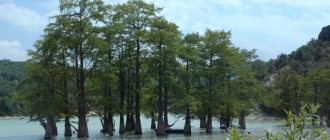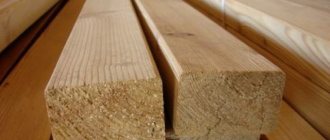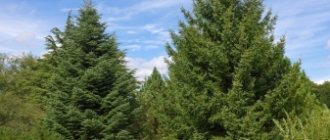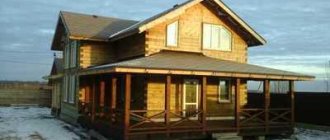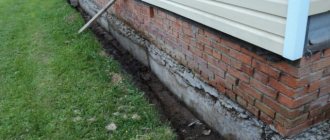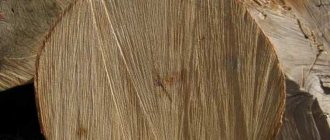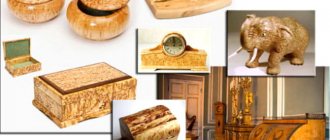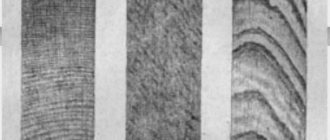The properties of wood, by which one type of wood can be distinguished from another without compromising its integrity, refer to the physical properties of wood. Physical properties include texture, color, as well as the smell of wood, and others.
Every type of wood has a smell, even if it is not detected by the human sense of smell, and each type has its own unique aroma.
The durability and richness of the aroma of wood depends on the amount of resins, essential oils and tannins it contains. During drying, the smell of wood is not perceptible to our sense of smell, whereas all freshly cut wood has a clear and rich aroma.
general characteristics
Birch is a deciduous tree and shrub species. Trees are most widely represented, but shrub forms are also found. Scientific name Betula, birch family. In nature, there are more than a hundred species of these tree species growing throughout the Northern Hemisphere. The most common in Russia are weeping birch (warty birch) and downy birch. These species occupy more than two-thirds of all deciduous Russian forests. The birch tree is rightfully considered the national symbol of the Russian people.
Birch in nature
Birch is a tall tree, reaching a height of 30 to 45 m, with a trunk diameter ranging from 40 to 70 cm, but larger specimens are also found. Life expectancy is on average 100-120 years; there are some long-lived specimens (up to 400 years).
Birch grows on any soil, forming a powerful root system that goes deep into the ground.
Birch bark has a characteristic white color with black markings, but there are also trees with yellowish or gray bark, it all depends on where it grows. Commercial timber is harvested from trees 60-80 years old. Trees over 40 years old are harvested as fuel (birch firewood is considered the best).
Birch trunks often develop growths called burls; this is a valuable ornamental material.
The most used types of birch
There are more than 100 species of birch trees growing in the world. In carpentry and construction, only two are most often used:
- Birch is downy or pubescent;
- Silver birch or warty birch.
Both species are found in our country and often grow together. They occupy 2/3 of deciduous forests in Russia. Downy birch most often grows in the east and north, and silver birch in the south.
These breeds are distinguished by high performance and decorative properties. In particular, the greatest density and strength.
Physical properties
Birch is a tree species that does not have a core. The central and peripheral parts of the trunk are almost the same in color. Birch wood has a light color, with a slight yellow or pinkish tint. Older trees sometimes develop false heartwood, when the central part of the trunk turns yellowish-brown or red-brown.
In tangential and radial cuts, the wood has a pleasant soft silky shine.
Birch wood is dense and uniform, so the texture has a faint wavy pattern. Tree rings are not visible in longitudinal sections; they can only be seen in transverse sections in the form of narrow strips of late growth wood.
The medullary rays are very narrow, visible only in radial sections as shiny small ribbons of a dark color, this gives the texture pattern a noble appearance.
The texture pattern of birch wood is characterized by reddish spots scattered randomly on the cut plane.
Birch wood is strong, uniform and dense. In a dry state (at 12-18% humidity) the specific density averages 650 kg/cub.m. The density range is from 540 to 700 kg/cub.m.
A living tree has high humidity, especially in spring, when intensive sap flow begins. At this time, wood moisture content can reach 200%.
Birch is a highly drying species; the shrinkage coefficient in the longitudinal direction ranges from 5 to 8%.
The thermal conductivity of birch wood is almost 2 times greater than that of species such as pine or spruce. This is due to the fact that birch has a high density.
The heat of combustion of birch firewood is one of the highest, so this type of fuel is the most popular in those houses where there are fireplaces.
What do different types of wood smell like?
It is impossible to compare the smell of each type of wood with something or describe in words. Each of them is unique; for the human sense of smell, odors can be divided into pleasant and unpleasant.
Unpleasant wood includes poplar, laurel or teak. These breeds have a persistent, unpleasant odor.
And species with an attractive smell for humans include acacia wood, peach, cypress, juniper, rosewood, citrus trees and others.
tangerine tree
- Due to the large amount of resins in coniferous wood, it has the most persistent aroma.
- Hardwoods emit a less intense aroma. Its durability, again, is determined by the amount of tannins contained in the wood.
- For example, after drying and processing, linden wood has a very persistent odor due to the high concentration of the substance phraseol in it. The substance has a sweetish smell with hints of honey, so honey barrels are often made from linden wood.
- As we know, oak barrels are often used to store cognac, beer or wine. The sour aroma of oak wood, mixing with alcohol, gives the latter a unique shade of taste and aroma.
- But birch wood is practically imperceptible to the human “nose”. Therefore, birch wood is used to produce dishes and containers for storing cereals.
Birch log
Subscribe to our Yandex.Zen channel
Mechanical properties
Birch wood has high strength, resists shock loads well, and is difficult to split. Bending strength is average, bends well, elasticity is average.
Wear resistance is high, in these parameters it is almost not inferior to oak wood.
Resistance to fungal diseases and damage by insect pests is low. In the open air, birch products quickly become rotten and destroyed. Therefore, measures should be taken to protect wood from negative external factors and treatment with antiseptic materials should be used.
To dry birch wood, gentle conditions must be followed, as warping and cracking are possible. When drying under natural conditions, lumber must be bundled, which reduces the risk of warping of the workpieces. Drying under such conditions can last up to two years. In this case, the ends of the workpieces must be painted over with lime, paint, or sealed with paper using PVA glue. This will reduce cracking of the workpieces and minimize defects.
The fasteners hold well, but it is advisable to drill holes before using them. Although it is easier to screw a screw into a birch board than into an oak board, it also requires more effort.
Birch lumber
Application of birch
Wood is used in various fields of industry; construction and finishing materials are made from it: plywood, veneer, building parts, fittings, parquet boards, etc. In the chemical industry, furfural is produced from birch sawdust.
And carpentry products are highly valued, carved souvenirs and toys, dishes. Skis are also made. The density of birch allows it not to crack for a long time, so masters of artistic cutting use it for crafts and other products (boxes, cigarette cases, etc.).
Wood is not suitable for construction, as it rots quickly, but it is suitable as a finishing for interior surfaces.
For large products, large old trees aged 60-100 years are most often used. For making firewood (birch is excellent for heating), trunks that are 40-60 years old are suitable.
An amazing material is the so-called iron birch, which grows in Primorye and was first discovered by the botanist Schmidt. The tree lives up to 200 years of age and has amazing properties. It was used to make ship hulls that were resistant to rotting, corrosion, and were not destroyed even when exposed to acids. A bullet does not pierce an iron birch board, and it is 3.5 times stronger in bending than cast iron.
Treatment
Although birch wood is dense, it can be easily processed with any tool, both manual and mechanized. Processing on planing machines, manual milling machines, turning on lathes allows us to obtain clean surfaces of a high class of cleanliness. At the same time, the likelihood of chipping on products is very low, and with certain skills it is reduced to zero.
Cutting with chisels or knives both along and across the grain allows you to get very clean cuts. The main condition for this is a sharp tool. According to these characteristics, birch wood is superior even to linden wood.
Due to the fact that birch is very finely porous and dense, it lends itself well to grinding operations. The resulting surfaces are very smooth and have a silky soft shine.
Treated birch wood surface
The process of gluing birch wood blanks does not cause any difficulties; the glue adheres tightly to the wood, forming strong joints.
Mordants and stains perfectly color wood, and an imitation of mahogany or walnut is easily obtained. Varnishes and polishes easily adhere to birch wood, forming high-quality external coatings.
Birch juice.
Firstly, making sure that the juice flows only through a tube or tin gutter is quite problematic; often most of it flows down the trunk. Secondly, it is not always possible to attach a bottle or jar in such a way that the drops fall inside, and if this is possible, then often, when a little juice is collected in the container, it moves under its weight, and the juice no longer gets into the neck. Thirdly, you have to make a triangular tongue from birch bark under the hole, thanks to which you can avoid loss of sap, and traces of these actions remain for a long time, if not forever, disfiguring the slender white-trunked birch trees. Moreover, if you follow the instructions and drill a hole no larger than 2 cm, then after a couple of days the juice will flow much more slowly than at the beginning of the damage. And here there are two options: either increase the hole in diameter, or make a new one. We saw both as undesirable, so this method was not popular with us. Sometimes in birch forest belts I came across bottles hanging on a trunk, and above them there were several old and fresh holes or, even worse, deep cuts with an ax. Unfortunately, this is exactly what the recommendations common in the literature look like in practice.
Having rejected the most inconvenient, destructive and unaesthetic, in our opinion, method, we collected the juice in a different way. They chose a suitable branch, about the thickness of a finger or a little more, but extending not directly from the trunk at an upward angle, but from a thicker branch or almost horizontally. Then an oblique cut was made and the branch was inserted into the neck of a one and a half liter or liter bottle, depending on the intensity of sap flow. It was not a big task to secure the bottle to the branch with wire. Sometimes suitable branches were located at a great distance from the ground, and we had to climb the tree. This made the juice seem even sweeter. However, this may be due to the fact that it has traveled a long way along the trunk and absorbed more glucose and fructose - sugars that determine the sweet taste of the healing drink.
The unbreakable rule was that we placed one bottle or, at most, two on one tree. This ensured both the stability of sap flow throughout the entire period and the limitation of injuries to some of the “sweetest” trees. The latter most often stood separately on some hillock well warmed by the sun. There was still snow in some places, and the birch trees were just beginning to emerge from their winter sleep, and then the sap was already flowing in full force. We tried not to touch young birch trees, but gave preference to mature, strong trees.
It is better not to collect juice near towns and villages. There is no need to once again endanger trees that are already tormented by people’s attention. In addition, the flow of sap here was always delayed, rather sluggish and short-lived. And the sap of a tree growing near a busy highway or in an industrial zone of the city will generally only bring harm instead of benefit.
And yet, the amount of sap collection is influenced by a number of factors: latitude, forest type, weather in summer and winter before tapping and during tapping, hours of the day, completeness of the tree stand, degree of tree dominance. Healing powers.
For medicinal purposes, two types of birch are most often used: silver birch and spreading birch. Their buds, leaves, juice, ash (activated carbon), tar obtained by dry distillation of wood, xylitol (a sugar substitute for diabetics obtained from wood waste) - all this is widely used in medicine. Birch sap contains 0.5 - 2% sugar, it contains enzymes, organic acids, tannins, calcium, potassium, iron salts, plant hormones, glucose and substances with high antimicrobial activity (phytoncides).
Every year a person should consume at least 6 liters of birch sap. This healing drink destroys urinary stones, is effective in treating stomach and liver ulcers, headaches, bronchitis, cough, and helps with rheumatism, radiculitis, and arthritis. In addition, birch sap cleanses the blood, has a regenerating effect, stimulates metabolism, and is also an excellent dietary and refreshing drink. Systematic intake of birch sap has a general strengthening and tonic effect. Doctors say that if you drink at least a glass of juice a day, drowsiness, fatigue, and irritability will disappear. In general, drinking birch sap in its pure form is a pleasure. This is a pleasant, refreshing and body-strengthening drink.
